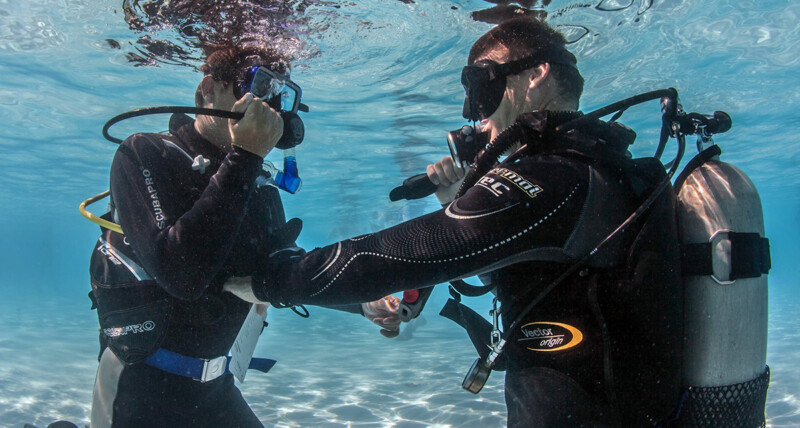For any diver aspiring to become a professional-or simply to be a responsible buddy diver-knowing how to manage an emergency is not optional. It’s essential. That’s why writing a comprehensive Emergency Action Plan (EAP) is such a vital skill in dive training programs like Rescue Diver, Divemaster, and Instructor Development.
Unfortunately, most first-time EAPs fall short. Students often submit minimal contact information and overlook the most important part: what to actually do in an emergency. A good EAP goes far beyond a list of phone numbers-it is a living document that prepares divers to respond quickly, confidently, and effectively when things go wrong.
Here’s how to build a solid, field-ready Emergency Action Plan that meets both PADI and DAN expectations.
What Is an Emergency Action Plan?
An Emergency Action Plan (EAP) is a step-by-step guide detailing what to do, who to call, and how to respond in various scuba diving emergencies. It should include clear instructions for managing:
– Injured or unconscious divers
– Missing divers
– Suspected decompression sickness (DCS) or arterial gas embolism (AGE)
– Severe environmental conditions
– Equipment failure or entrapment
– On-land accidents at the dive site
What a Great EAP Should Include:
- Basic Dive Site Information
– Exact name and address of the dive site.
– Directions to the site and nearby landmarks.
– GPS coordinates.
– Hours of operation and on-site contacts.2. Emergency Contacts
– Emergency Services (911 or local equivalent)
– Nearest hospital with address, directions, and contact number
– Hyperbaric chamber location
– Local law enforcement, fire department, Coast Guard (if applicable)
– On-site facility manager or dive shop contacts3. Available First Aid Resources
– Names and certification levels of first aid/CPR responders
– Location of first aid kit, oxygen, AED, and any communication tools (radio, beacons)
Step-by-Step Emergency Procedures – Key Elements
⚠️ Lost Diver:
1. Sound diver recall signal.
2. Initiate search from last known location.
3. Assign search and support roles.
4. Call EMS if diver not found within 5–10 minutes.
💀 Unconscious or Injured Diver:
1. Surface the diver and establish buoyancy.
2. Signal for help or tow to shore.
3. Begin rescue breathing or CPR.
4. Administer oxygen and call EMS.
5. Prepare for medical transport.
🌊 Decompression Sickness / AGE:
1. Stop diving; monitor diver.
2. Administer 100% oxygen.
3. Call DAN Emergency Hotline: +1-919-684-9111
4. Arrange transport to a chamber.
5. Record dive profile and symptoms.
Communication & Scene Management
– Who makes the emergency call and what they should say.
– Who will direct emergency responders.
– Who documents the incident.
– Who manages bystanders and other divers.
Evacuation and Transport Plan
– Route from water to emergency access point.
– Transport method (vehicle, EMS, boat).
– Site-specific obstacles.
– Back-up options like taxis or boats.
Include a Map or Diagram
– Entry and exit points
– Emergency equipment locations
– EMS access
– Communication stations
Practice and Review
– Brief your dive team before the dive.
– Assign emergency roles.
– Update plan with any changes to site or contacts.
DAN and PADI Resources
– https://dan.org/emergency-assistance/
– https://www.padi.com/courses/rescue-diver
Final Tips for Writing Your EAP
– Use clear, bullet-pointed steps.
– Emphasize critical actions.
– Make it easy to scan in a real emergency.
– Keep a laminated copy with your gear.
– Include your name and certification info.
Why This Matters
Emergency preparedness isn’t just about getting a passing grade-it’s about saving lives. Take the time to create a complete, practical, and site-specific Emergency Action Plan. You’ll be a more capable and confident diver, and you may even be someone’s lifeline one day.




